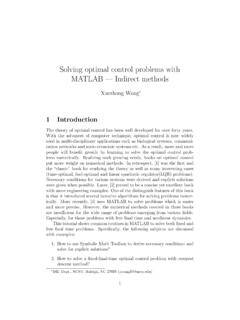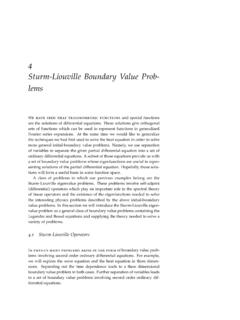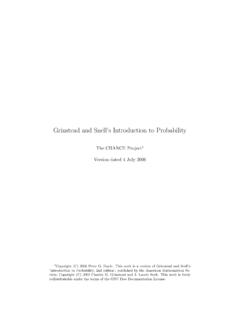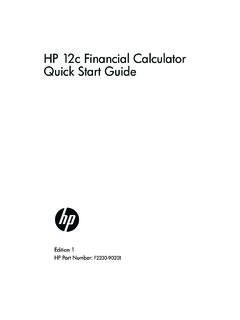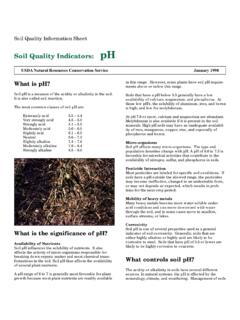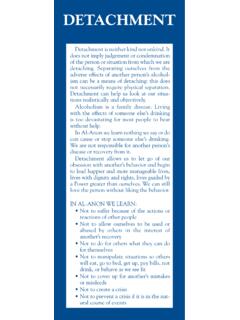Transcription of Assessing Reading Fluency - ed
1 Pacific Resources for Education and LearningAssessingAssessingReadingReading FluencyFluencyTimothy V. Rasinski, Reading Fluencyis intended to assist practitioners in monitor-ing students Fluency development. Assessments are discussed in termsof three components of Fluency : Accuracy, or accurate decoding of words in text; Automaticity, or decoding words with minimal use ofattentional resources; and Prosody, or the appropriate use of phrasing and expression toconvey Reading Fluencyis written by Dr. Timothy V. Rasinski ( ,Ohio State University), a professor of education in the Department ofTeaching, Leadership, and Curriculum Studies at Kent State has published over 100 articles and 10 books on various aspects ofreading education, including The Fluent Reader: Oral Reading Strategiesfor Building Word Recognition, Fluency , and Comprehension.
2 Recently served on the Board of Directors of the InternationalReading Association and is an editor for the Journal of Regional Educational Laboratory at Pacific Resources for Educationand Learning would like to express sincere thanks to the followingreviewers:Dr. David J. Chard, University of OregonDr. Melanie R. Kuhn, Rutgers UniversityDr. Wayne M. Linek, Texas A&M University CommerceCopyright 2004 by Timothy V. RasinskiThis product was funded by the Department of Education ( ED) under the Regional Educational Laboratoryprogram, award number ED01CO0014. The content does not necessarily reflect the views of the ED or anyother agency of the photo by Jennifer PaduaAssessing Reading Fluencyis published by Pacific Resources forEducation and Learning, Honolulu, Hawai i.
3 Additional copies may bedownloaded at Reading FluencyKimberly and Thomas s fourth grade teacher, Mr. Lee,can t quite pin down what is going on with these stu-dents. Both are good at Reading words; they are ableto decode all the words they encounter and seem to have a pret-ty good understanding of them as well. Moreover, they appear tobe of average to above average intelligence and are knowledge-able about the world around them. But, Mr. Lee also knows thatboth Kimberly and Thomas do not comprehend what they he asks them questions about what they read, they usual-ly respond I don t know, I don t remember, or give an incor-rect or incomplete answer. Interestingly, when Mr. Lee reads tothe class, both children seem to have a good understanding ofwhat is Lee refers Kimberly and Thomas to the school Reading spe-cialist, Mrs.
4 Pearce, for further testing. Mrs. Pearce works withKimberly and Thomas separately. She asks each of them to readaloud for her, after which she asks them to retell what they Pearce confirms Mr. Lee s observations about accuracy indecoding and poor comprehension. She also notes somethingelse that may be the cause of their Reading comprehension prob - lems : both read without appropriate phrasing or reads in a slow and labored word-by-word manner. Hisreading rate is 56 words correct per minute. Kimberly buzzesthrough the passage; she reads the words, but pays little atten-tion to sentence juncture or other punctuation. Her Reading rateis 178 words correct per minute. Mrs. Pearce thinks she hasfound the source of Kimberly and Thomas s difficulty in Reading Reading Reading Fluency 1 For years teachers thought that if students could learn to decodewords accurately, they would be successful in Reading printed it is true that accuracy in decoding is important for Fluency , itis not the entire story.
5 Readers not only need to decode the wordsaccurately; they also need to decode them effortlessly or automatical-ly. The ability to read with appropriate phrasing and expression(interpretation) is also important for Fluency . In essence, Reading flu-ency refers to accurate and automatic decoding of the words in thetext, along with expressive interpretation of the text, to achieve opti-mal comprehension. Fluency is important in Reading , then, because itaffects how well readers understand what they Reading FluencyA good analogy for understanding Reading Fluency comes from publicspeaking. Fluent public speakers embed in their voices those sameelements that are associated with Reading Fluency accuracy inspeech, appropriate speed, and phrasing and expression.
6 The speak-er s use of these aspects of Fluency facilitates the listener s compre-hension. Speaking in appropriate phrases, emphasizing certainwords, raising and lowering volume, and varying intonation help thelistener understand what the speaker is trying to a fluent speaker with one who is less fluent, who is anxiousabout speaking in public and renders a presentation in a slow, word-by-word monotone. This less fluent speaker makes it considerablymore difficult for listeners to comprehend the presentation. Theyhave fewer verbal cues to use and will have to listen more closelyand intensely to make sense of the speech. Indeed, listeners may findthemselves drifting away from the presentation altogether if the effortrequired to understand is too great.
7 This analogy seems to apply fair-ly well to Reading . Reading Fluency certainly affects Reading research reviews (Chard, Vaughn, & Tyler, 2002;Kuhn & Stahl, 2000; National Institute of Child Health and HumanDevelopment, 2000) have established that Reading Fluency is a criticalcomponent of learning to read and that an effective Reading programneeds to include instruction in Fluency . The National Assessment of2 Pacific Resources for Education and LearningEducational Progress (NAEP), for example, found that nearly half ofAmerican fourth graders had not achieved a minimal level of fluencyin their Reading , which was associated with significant difficulties incomprehension while Reading silently (Pinnell et al.)
8 , 1995).It may be helpful to think of Reading Fluency as a bridge between thetwo major components of Reading word decoding and comprehen-sion. At one end of this bridge, Fluency connects to accuracy andautomaticity in decoding. At the other end, Fluency connects to com-prehension though prosody, or expressive interpretation. These com-ponents of Reading Fluency are reflected in two major theories and Automaticity in ReadingFluent readers decode words accurately and automatically, without(or with minimal) use of their limited attention or conscious cognitiveresources. The theory that supports this aspect of Fluency beginswith the notion that readers have limited attentional resources. If theyhave to use a large portion of those resources for word decoding,those resources will not be available for use in comprehension.
9 Thetheory of automaticity in Reading suggests that proficient worddecoding occurs when readers move beyond conscious, accuratedecoding to automatic, accurate decoding (LaBerge & Samuels,1974; Samuels, 2002; Stanovich, 1991). At the automatic level, read-ers are able to decode words with minimal attention to the activity ofdecoding. Most adult readers are at this level of processing. They donot have to examine closely or sound out most of the words theyencounter; they simply recognize the words instantly and accuratelyon sight. This type of processing frees the reader s conscious atten-tion to comprehend or construct meaning from the in ReadingWhile it is good for readers to have the additional cognitive capacitythat comes from automaticity in word decoding, they also need toactively use that capacity to make sense of the text.
10 Readers canemploy their attention for comprehension or for other tasks. All read-ers have had the experience of accurately and automatically decodingAssessing Reading Fluency 3words while thinking about something else and, as a result, not com-prehended the is the point where Fluency connects directly to prosody component of Reading Fluency stresses the appropriateuse of phrasing and expression (Dowhower, 1987, 1991; Schreiber,1980, 1987, 1991; Schreiber & Read, 1980). When readers embedappropriate volume, tone, emphasis, phrasing, and other elements inoral expression, they are giving evidence of actively interpreting orconstructing meaning from the passage. Just as fluent musiciansinterpret or construct meaning from a musical score through phras-ing, emphasis, and variations in tone and volume, fluent readers usecognitive resources to construct meaning through expressive inter-pretation of the a sense, then, Reading Fluency is multidimensional one dimen-sion stresses the importance of accuracy in word decoding, a seconddimension focuses on quick and automatic recognition of words inconnected text, and a third dimension stresses expressive and mean-ingful interpretation of text.










